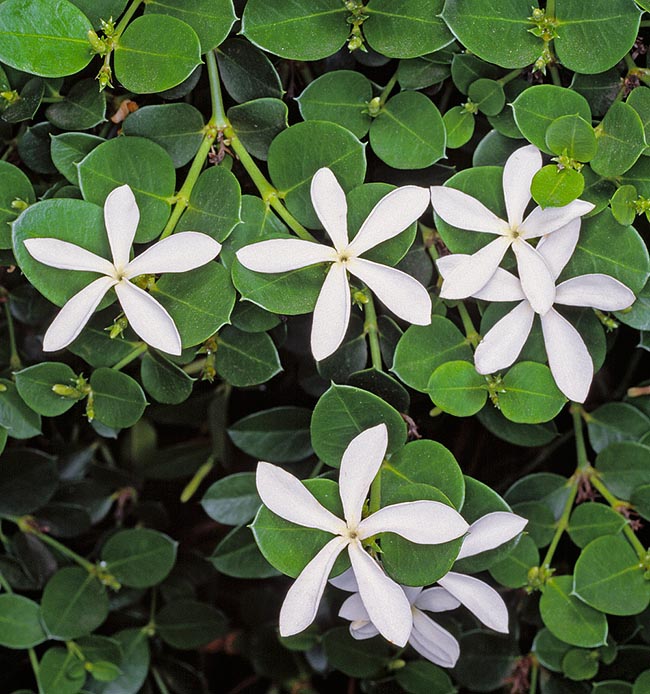Family : Apocynaceae

Text © Pietro Puccio

English translation by Mario Beltramini

Tropical and southern Africa Carissa macrocarpa is a 5-6 m evergreen shrub. Edible fruits with sourish taste, rich in vitamin C, but seeds and other parts of the plant, after some sources, appear to be toxic © Giuseppe Mazza
The name of the genus is the Indian one with which are called some plants of the same genus; the name of the species is the combination of the Greek words “makros” = big and “karpόs” = fruit, with obvious reference.
Common names: “carissa”, “prugna del Natal” (Italian); “Natal-plum” (English); “carisse”, “prunier du Natal” (French); “Natalpflaume”, “Wachsbaum”, “Grossfrüchtiger”, “ Grossfrüchtiger Wachsbaum” (German); “carisa”, “amatungula”, “cereza de Natal”, “ciruelo de Natal” (Spanish).
Evergreen, compact shrub, tall up to 5-6 metres, provided with robust thorns, often forked, long up to about 4 cm; the leaves are egg-shaped, coriaceous, of a glossy deep green colour, with mucronate (ending in a sharp point) apex, long from 3 to 8 cm; the inflorescences are terminal and carry from one to three white or pink perfumed flowers, of a diameter up to about 5 cm. The fruits are ovoid, purple, long up to about 5 cm, berries, with edible pulp; the seeds, about ten at the centre of the fruit, are brown, small, thin and roundish. It reproduces by seed, cutting and air layering.
The plants, of which several varieties do exist in cultivation, is fit for tropical, subtropical and warm-temperate climates, as the aerial part gets damaged already at temperatures of a few degrees under 0°C, especially in the young plants. Not particular in soil, provided draining, it resists also to short periods of drought, to the wind and to the saltiness, therefore its utilization is advisable next to the sea; the best exposition is in full sun, but it adapts also to partial shade. The production of fruits outside from its origin area, where the flowers are usually pollinated by night insects, is usually poor, it can be increased through a crossed hand pollination.
The fruits, rich in vitamin C and with a rather acid taste, are to be consumed well ripe, or utilized for jellies and jams.
But the flesh of the ripe fruit, all other parts of the plant, after some sources, seeds included, contain potentially toxic substances.
Synonyms: Arduina macrocarpa Eckl. (1830); Arduina grandiflora E.Mey. (1838); Carissa grandiflora (E.Mey.) A.DC. in A.P.de Candolle (1844); Jasminonerium grandiflorum (E.Mey.) Kuntze (1891); Jasminonerium macrocarpum (Eckl.) Kuntze (1891); Carissa carandas Lour. (1790); Carissa africana A.DC. in A.P.de Candolle (1844); Jasminonerium africanum (A.DC.) Kuntze (1891); Carissa praetermissa Kupicha (1981).
→ To appreciate the biodiversity within the APOCYNACEAE family please click here.
